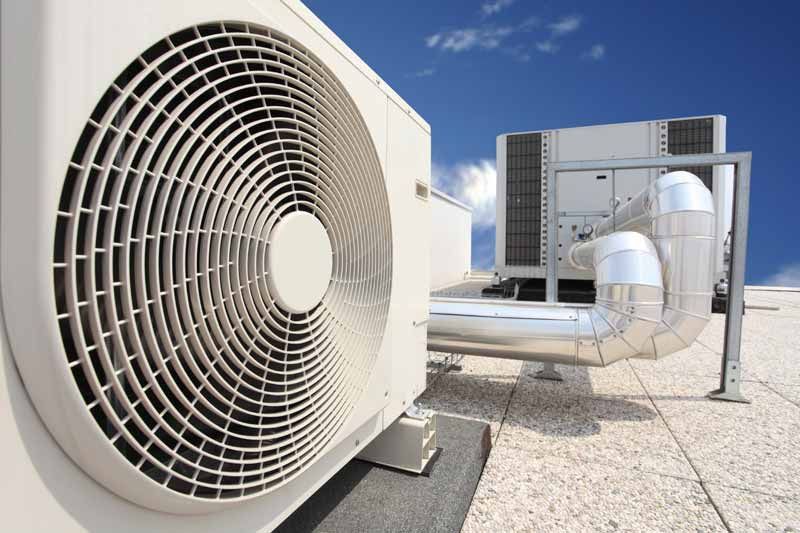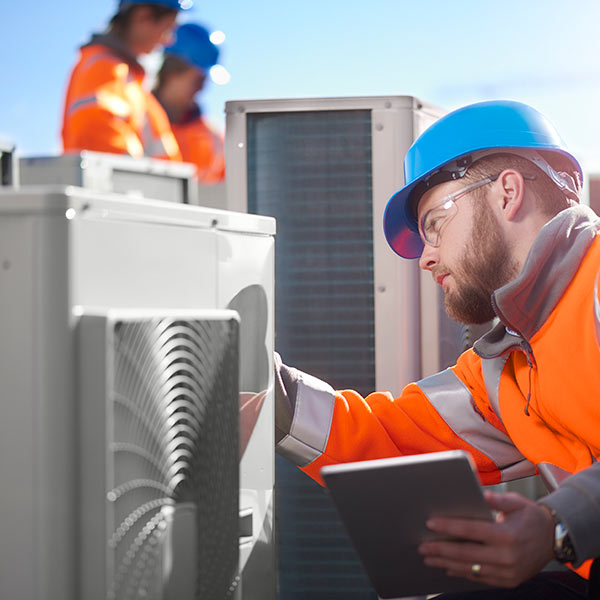Selecting Equipment for heat pump installation ooltewah tn
Selecting Equipment for heat pump installation ooltewah tn
Blog Article
How a Warmth Pump and Furnace Collaborate to Enhance Your Home's Home heating Performance
Recognizing exactly how a warmth pump and furnace interact is necessary for house owners looking for reliable heating services. Each system has its staminas, supplying a balanced strategy to home comfort. The heatpump succeeds in modest temperature levels, while the heating system supplies rapid warmth during extreme cold. This harmony not just decreases power costs but additionally improves the life expectancy of both appliances. What factors influence this cooperation, and exactly how can homeowners optimize their advantages?
Comprehending Heat Pumps: Exactly How They Work
Several people might be unfamiliar with their internal operations, heat pumps play a crucial role in modern home heating systems. These devices run by moving warmth from one location to an additional, using the principles of thermodynamics. In colder months, a heatpump extracts warmth from the outside air, ground, or water, and transfers it inside your home to heat the home. Conversely, during warmer months, it can turn around the process, serving as an air conditioning unit by removing heat from inside to the outside.Heat pumps contain an evaporator, growth, condenser, and compressor shutoff. The refrigerant within the system takes in heat as it evaporates at low temperatures and stress. The compressor after that increases the stress and temperature level of the refrigerant, allowing it to launch warm as it condenses. This efficient process can considerably lower power consumption compared to conventional heating techniques, making heatpump a sustainable option for climate control in homes.
The Duty of Furnaces in Home Heating
Furnaces play a crucial role in home heating by providing a trustworthy source of warmth during the cooler months. They operate by generating heat with combustion or electrical resistance, dispersing it throughout the home via air ducts or glowing systems. The efficiency of a heater is commonly gauged by its Annual Fuel Utilization Performance (AFUE) ranking, which shows just how efficiently the device transforms gas into heat.Furnaces can make use of various energy resources, consisting of natural gas, gas, electrical power, or oil, permitting property owners to pick one of the most suitable option for their needs. Unlike heat pumps, which might have a hard time in extreme chilly, heating systems keep constant efficiency, guaranteeing that interior temperature levels remain comfy no matter exterior conditions. Additionally, contemporary furnaces frequently come equipped with advanced technology, such as variable-speed blowers and smart thermostats, enhancing their effectiveness and responsiveness. This flexibility makes furnaces a crucial element in comprehensive home heating techniques.

Benefits of Making Use Of Both Solutions Together
Integrating the strengths of both heaters and warmth pumps can lead to a much more efficient and effective home heating service. Making use of both systems enables house owners to take advantage of the heatpump's power efficiency during milder temperatures while counting on the furnace for more severe cold problems. This double technique can significantly reduce energy expenses, as warmth pumps consume much less electrical power than conventional home heating techniques when temperatures are moderate.Additionally, utilizing both systems together can improve convenience degrees in the home. Warmth pumps can provide regular, also heating, while heating systems can quickly increase ambient temperature levels when needed. The combination of both systems can prolong the lifespan of devices by decreasing wear and tear on each device, as they share the workload. Inevitably, property owners can appreciate a well balanced, economical heating solution that changes seamlessly to differing climate problems, making sure a cozy and inviting home throughout the wintertime months.
How Warmth Pumps and Furnaces Enhance Each Various Other
They produce a complementary home heating system that maximizes efficiency and convenience when homeowners incorporate heat pumps and heating systems. Warmth pumps run by transferring heat from the outdoors air or ground, making them extremely reliable in modest climates. They succeed during milder temperatures, giving economical heating. On the other hand, heating systems create heat through burning or electric resistance, delivering strong, instant warmth during extreme chilly conditions.The combination of these two systems enables dynamic modifications based on temperature level fluctuations. Throughout warmer months or milder winter season days, the heat pump can take the lead, conserving power and minimizing expenses. As temperature levels decrease, the heater can perfectly engage, ensuring constant heat throughout the home. This synergy not just enhances energy usage but likewise improves the lifespan of both systems, as each device runs within its excellent performance variety. With each other, they create a well balanced setting that adjusts to varying environment demands.
Enhancing Effectiveness: Tips for Homeowners
Home owners can improve their heating effectiveness through numerous practical techniques. Establishing a normal maintenance routine, integrating wise thermostat technology, and carrying out effective insulation and securing services are crucial steps. These measures not only boost comfort but likewise decrease power prices.
Normal Upkeep Arrange
To guarantee optimal home heating efficiency, establishing a normal maintenance timetable is necessary for any type of home. House owners should focus on regular assessments of both heatpump and furnaces to establish peak efficiency. This includes altering air filters each to three months, as clogged up filters can significantly minimize performance. Furthermore, scheduling specialist upkeep at the very least yearly allows professionals to identify and attend to potential issues prior to they escalate. Home owners must also clean up the heatpump's exterior system to stop debris buildup that can impede air flow. By adhering to a routine upkeep schedule, home owners not just enhance their furnace' efficiency but also extend their lifespan, resulting in better convenience and lowered energy costs throughout the chillier months.
Smart Thermostat Combination
Integrating a clever thermostat right into a home furnace can significantly enhance power efficiency, particularly as it permits accurate control over temperature setups. These gadgets can learn the house owner's routine and choices, automatically readjusting the temperature to maximize convenience while minimizing power usage. They can decrease home heating throughout times when the home is unoccupied, minimizing unnecessary consumption. Several wise thermostats also supply real-time energy usage information, allowing homeowners to make educated decisions about their home heating behaviors. Furthermore, remote gain access to via mobile phone apps permits users to adjust setups from anywhere, making certain the home is warm upon return. On the whole, wise thermostat integration not just improves comfort yet considerably adds to energy cost savings and performance.
Insulation and Sealing Solutions
Smart thermostats play an essential role in power effectiveness, but their performance can be greatly enhanced by proper insulation and sealing services. Home owners must focus on protecting attic rooms, floors, and walls to lessen heat loss. Top quality insulation products, such as spray foam or fiberglass, can greatly boost thermal resistance. Furthermore, securing spaces around doors, home windows, and air ducts stops cool air infiltration and warm getaway. Weatherstripping and caulking are reliable methods for dealing with these leaks - heat pump service. Normal examinations for air leaks, in addition to making use of blower door tests, can help recognize trouble locations. By investing in insulation and securing, property owners can optimize the efficiency of their heating systems, eventually leading to useful reference minimized power usage and reduced energy costs
Usual Misconceptions Concerning Heat Pumps and Furnaces
What mistaken beliefs surround heatpump and furnaces? Numerous individuals incorrectly think that warm pumps are inefficient in chillier climates. In fact, modern-day heatpump are created to operate effectively also in reduced temperatures, offering trustworthy home heating throughout winter months. Another common misconception is that heaters are always more efficient than warm pumps. This depends on the particular power resources and effectiveness rankings of the units in question. Some may additionally think that making use of both systems all at once is unneeded, yet actually, this combination can maximize heating performance, especially during severe weather. Additionally, people typically think that warmth pumps require continuous upkeep, when actually, they have comparable upkeep requires to standard heater. By debunking these myths, home owners can make even more enlightened decisions regarding their heating choices, eventually resulting in improved comfort and energy performance in their homes.
Upkeep Factors To Consider for Combined Equipments

Regularly Asked Concerns
Can Warmth Pumps Work Properly in Exceptionally Cold Climates?
Heatpump can have a hard time in exceptionally chilly environments as a result of reduced performance and warm removal limitations. Nonetheless, improvements in technology have caused versions developed for better performance in such problems, improving their feasibility in severe environments.
How Much Time Do Warm Pumps and Furnaces Commonly Last?
Heatpump generally last 15 to two decades, while heating systems have a life expectancy of 15 to three decades. Routine maintenance can prolong their durability, making sure reliable operation and lowering the need for early replacements.

What Is the Average Cost of Setting Up Both Solutions?
The average price of setting up both a warm pump and a heating system usually varies in between $5,000 to $10,000 - ductless mini splits. Elements affecting this cost consist of system dimension, installation intricacy, and regional labor prices
Are There Tax Incentives for Utilizing Energy-Efficient Heating Solutions?
Numerous property owners inquire about tax incentives for energy-efficient heating unit. Different federal and state programs commonly offer credits or discounts, encouraging the adoption of lasting innovations to decrease power intake and advertise ecological duty.
Just how Do I Select the Right Size Heatpump and Furnace?
Picking the ideal size heatpump and heating system involves calculating the home's square video, thinking about insulation high quality, and evaluating local climate. Consulting a specialist can ensure optimal system efficiency and energy effectiveness based on certain requirements. furnace replacement. Recognizing exactly how a heat pump and furnace work with each other is necessary for home owners seeking efficient home heating services. In cooler months, a heat pump extracts heat from the outside air, ground, or water, and transfers it inside your home to warm up the living area. When property owners integrate heat pumps and heating systems, they create a corresponding home heating system that makes the most of performance and comfort. Warm pumps run by moving warmth from the outdoors air or ground, making them very effective in moderate climates. Warm pumps can battle in very cold climates Resources due to decreased performance and warmth removal constraints
Report this page